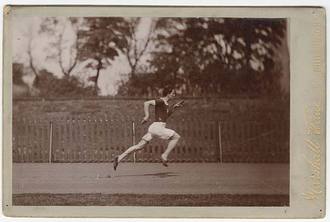
 The National Library of Scotland has uncovered some rare sporting images from the turn of the last century, including this action photo of Alfred Downer sprinting. It is one of a series of posed pictures of Downer taken for his book, Running Recollections and How to Train, which was published in 1900. The NLS has appealed for information to help them identify a range of pictures, some of them showing athletics at Powderhall, and I have written to tell them that this is Scotland's world-famous track champion. You can see all the pictures at http://digital.nls.uk/edwardian-sports/list.cfm
0 Comments
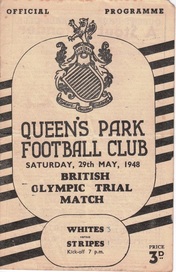 I'm looking forward to the Olympic Games football at Hampden, as it promises to be quite an occasion. But this is not the first time there has been Olympic football at the national stadium. In 1948 it hosted the British Olympic Trial Match, between two selected sides from all four home nations. Star of the match was English right half Bob Hardisty, who went on to play for Great Britain in three summer Olympics: 1948, 1952 and 1956. 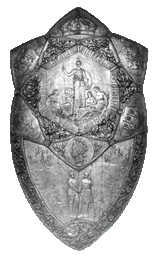 An important sporting anniversary has gone entirely unmarked in the media today. On 9 July 1862, 150 years ago today, the first ever sporting contest between England and Scotland on equal terms took place. It was the Elcho Shield match between shooting eights at the National Rifle Association's annual meeting at Wimbledon. The editor of the Volunteer Service Gazette appointed two captains: Lord Bury for England and Captain Horatio Ross for Scotland. This inspired Lord Elcho, a Scottish peer, to donate the Elcho Challenge Shield (pictured). The first match was won by England by 166 points (890 to 724), and Scotland won for the first time in 1864, the same year that a second international contest was first held, twenty a side, known as the Volunteer Match. NB There is a link between the Elcho Shield and the early football internationals, as Wingfield Malcolm MP, who played football for Scotland in 1870, was an enthusiastic volunteer and shot for Scotland in 1869, and was non-playing captain in 1876. To read more, see these links: National Rifle Club of Scotland and English Eight Club. 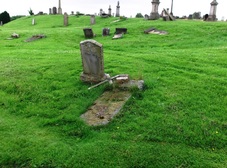 I've been trying to track down the gravestones of all the Scotland players in the first international of 1872, and this sorry sight seems to be the last resting place of William Muir Mackinnon. It's impossible to tell, as the heavy granite slab is face down and would need a crane to lift it, but the location fits with the burial record in Cambuslang's Westburn Cemetery. Mackinnon, who played in all of the first eight internationals against England, has two other claims to fame: he was a guest for Rangers in their first ever match in 1872, and was also the last survivor of the original Scotland team, dying in 1942 aged 90. 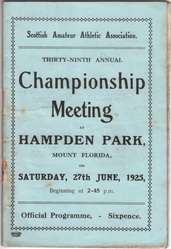 Last night I watched The Real Chariots of Fire, with Nigel Havers waxing lyrically about Eric Liddell and Harold Abrahams. Not the most taxing of viewing (you can see it again on STV Player), but it did prompt me to look out this programme from 1925, the SAAA annual championship at Hampden Park, where Liddell ran his last race. It was a day of extraordinary performances. The programme opened with him winning his heat in the 100 yards, followed almost immediately by a record-equalling ten second time in the final. Next came the 220 yards, with a walkover in his heat and a winning time of 22 1/5 seconds in the final. In the 440 yards, his third cup of the day, breasting the tape in 49 1/5 seconds. And to round off the day, he ran the final leg of the one mile relay for the Edinburgh University team, another victory. Four races, four victories. Two days later, Liddell left Edinburgh for the first leg of his journey to China, and never returned. Postscript: it has been pointed out to me that Liddell continued running (and setting records) in China, so this was his last race in the UK. |
Archives
July 2024
CategoriesAuthorAll blog posts, unless stated, are written by Andy Mitchell, who is researching Scottish sport on a regular basis. |
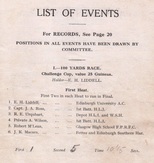
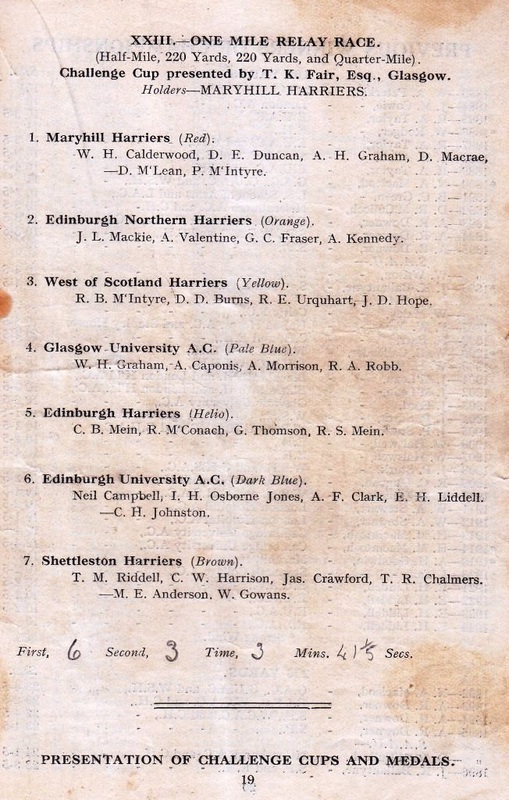
 RSS Feed
RSS Feed